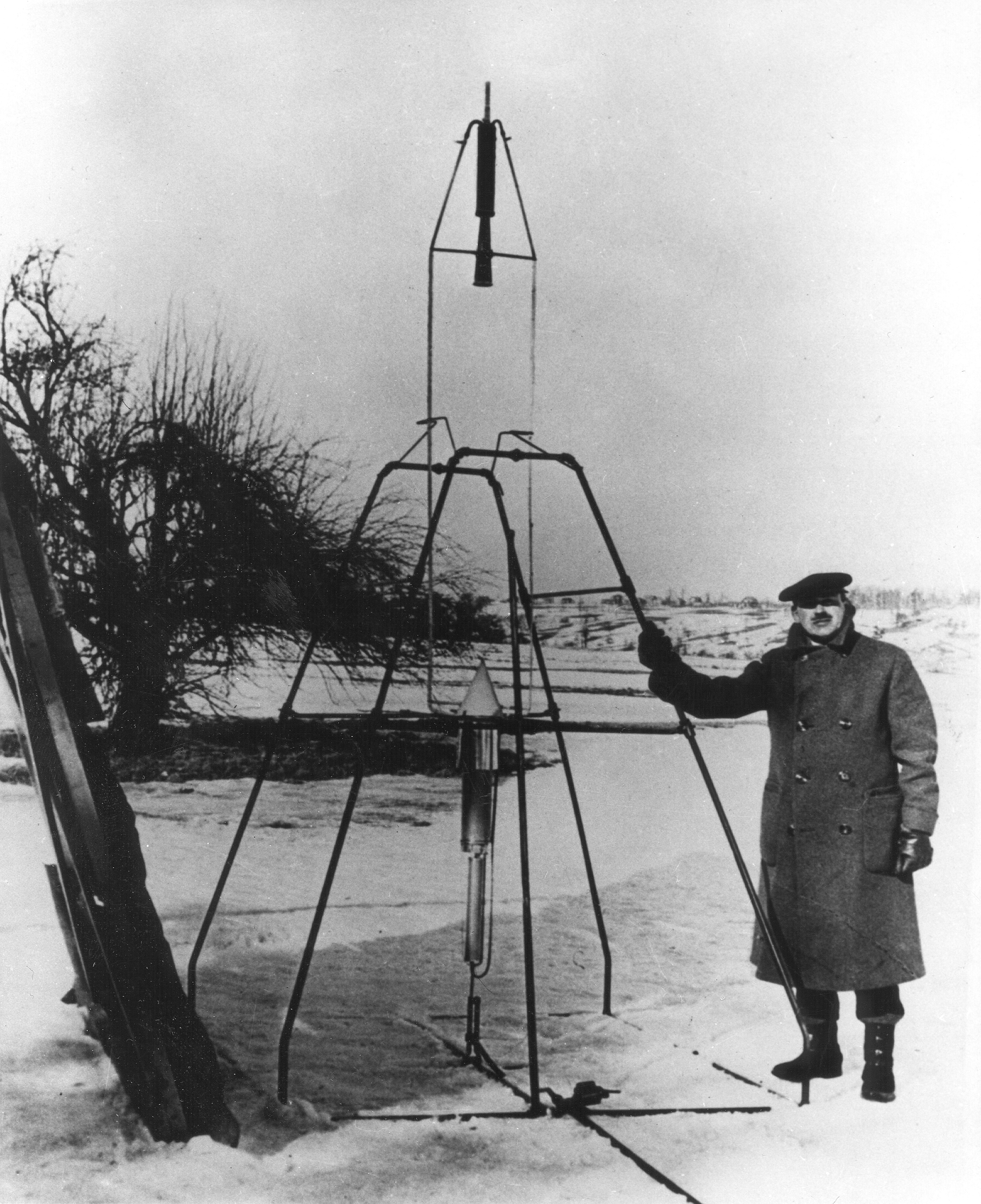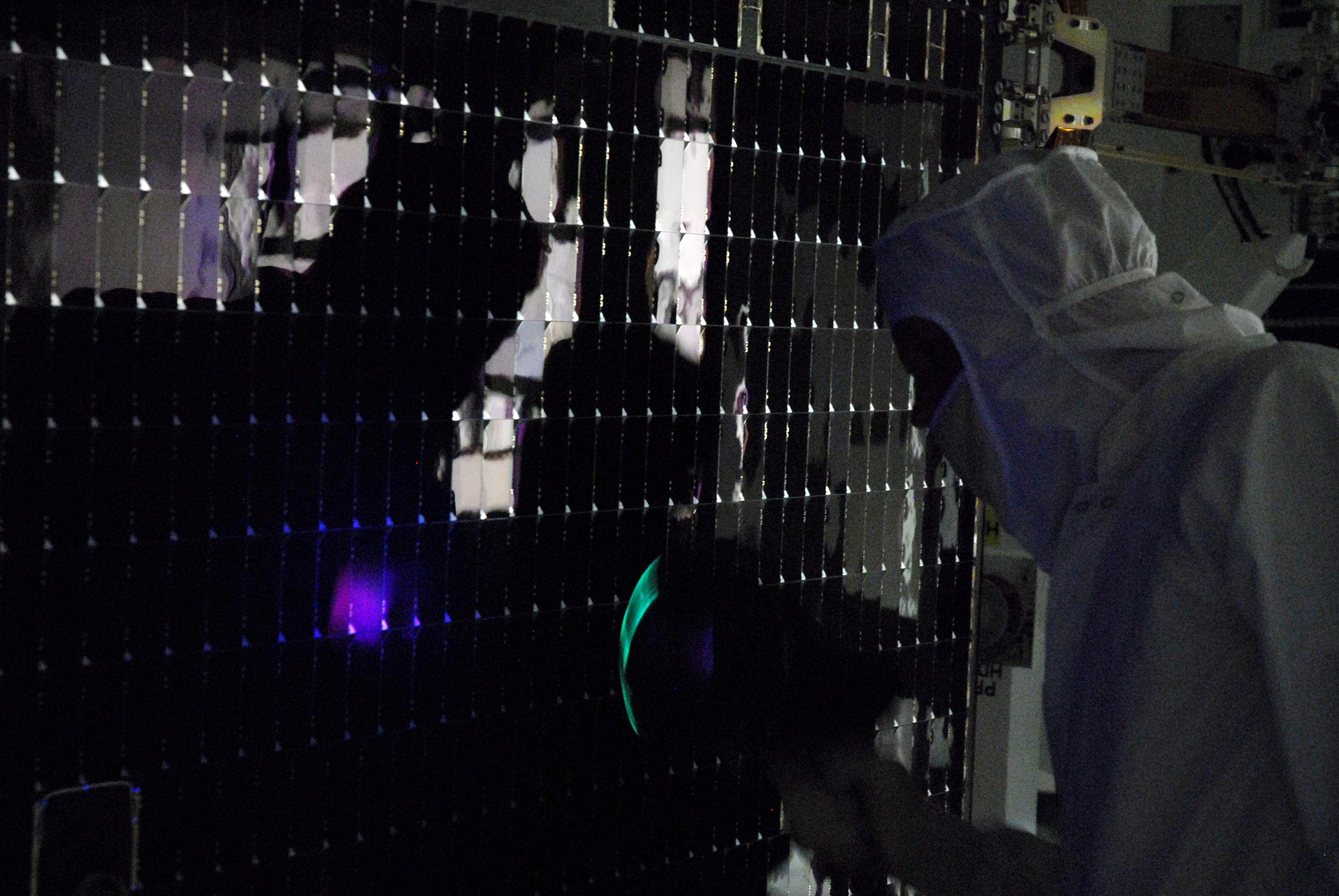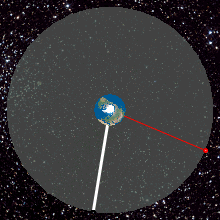|
Intelsat 15
Intelsat 15, also known as IS-15, is a communications satellite owned by Intelsat. Intelsat 15 was built by Orbital Sciences Corporation, on a Star-2.4. It is located at 85° E longitude on the geostationary orbit. It was launched from Baikonur Cosmodrome to a geosynchronous transfer orbit on 30 November 2009 by a Zenit-3SLB launch vehicle. It has 22 active Ku band transponders, plus eight spares. Five of those transponders are owned and operated by SKY Perfect JSAT Group under the name JCSAT-85. Satellite description Intelsat 15 is a 3 axis stabilized geostationary communications satellite based on the Star-2.4 satellite bus. It weighed at launch, had a dry mass of , and a design life 15 years. It had a power availability dedicated to the payload of 4.6 kW, due to its multi-junction GaAs solar cells. It also had two 4840 watt hour Li-ion batteries for surviving the solar eclipses. The satellite used a bipropellant propulsion system with an IHI BT-4 Liquid ... [...More Info...] [...Related Items...] OR: [Wikipedia] [Google] [Baidu] |
Intelsat
Intelsat S.A. (formerly INTEL-SAT, INTELSAT, Intelsat) is a multinational satellite services provider with corporate headquarters in Luxembourg and administrative headquarters in Tysons Corner, Virginia, United States. Originally formed as International Telecommunications Satellite Organization (''ITSO'', or INTELSAT), from 1964 to 2001, it was an intergovernmental consortium owning and managing a constellation of communications satellites providing international telecommunications and broadcast services. As of June 2022, Intelsat operated a fleet of 52 communications satellites which was then one of the world's largest fleets. In 2020, the company announced plans to procure, build and launch seven C-band satellites over the next several years. These C-band satellites will contribute to the acceleration of America's 5G buildout. In early 2022, the company announced contracts for four GEO software defined satellites (SDS), two in partnership with Airbus and two in partnershi ... [...More Info...] [...Related Items...] OR: [Wikipedia] [Google] [Baidu] |
Star-2
The STAR-2 Bus is a fully redundant, flight-proven, spacecraft bus designed for geosynchronous missions. It is a satellite platform, designed and developed by Thomas van der Heyden for the Indonesian Cakrawarta satellite program in the early 1990s, now manufactured by Northrop Grumman Innovation Systems with an apogee kick motor to place a communications satellite into geostationary orbit, a thruster to provide the satellite with orbital station-keeping for a 15-year mission, and solar arrays to provide the satellite payload with 5 kW of electrical power. Advantages NGIS's GEOStar-2 bus design is unique within the satellite industry. NGIS's GEOStar-2 bus provides an affordable low-to-medium power satellite platform that is ideal for missions of this size. Rather than being a less efficient version of a larger, heavier product, NGIS's GEOStar-2 bus is designed specifically for the 1000 to 5550 watts payload class. Design The GEOStar-2 bus satellite is a modular, mass e ... [...More Info...] [...Related Items...] OR: [Wikipedia] [Google] [Baidu] |
BT-4 (rocket Engine)
The BT-4 is a pressure-fed liquid rocket engine designed and manufactured by IHI Aerospace of Japan. It was originally developed for the LUNAR-A project, but it has been used as a liquid apogee engine in some geostationary communications satellite based on the Lockheed Martin A2100 and GEOStar-2 satellite buses. It has also been used on the HTV and Cygnus automated cargo spacecraft. History During the 1970s, Ishikawajima-Harima Heavy Industries had built under license the Rocketdyne MB-3 for the N-I rocket, for which it had also developed the second stage attitude control system. In the 1980s it also developed the thrusters for ETS-4 ( Kiku-3), the first to be built in Japan. In 2000 it acquired and merged with the aerospace division of Nissan and became IHI Aerospace. IHI Aerospace started developing the BT-4 for the later cancelled LUNAR-A mission to the moon. While the mission was cancelled, the thruster has seen success as a liquid apogee engine on the Lockheed Martin ... [...More Info...] [...Related Items...] OR: [Wikipedia] [Google] [Baidu] |
Bipropellant
The highest specific impulse chemical rockets use liquid propellants (liquid-propellant rockets). They can consist of a single chemical (a monopropellant) or a mix of two chemicals, called bipropellants. Bipropellants can further be divided into two categories; hypergolic propellants, which ignite when the fuel and oxidizer make contact, and non-hypergolic propellants which require an ignition source. About 170 different propellants made of liquid fuel have been tested, excluding minor changes to a specific propellant such as propellant additives, corrosion inhibitors, or stabilizers. In the U.S. alone at least 25 different propellant combinations have been flown. As of 2020, no completely new propellant has been used since the mid-1970s. Many factors go into choosing a propellant for a liquid-propellant rocket engine. The primary factors include ease of operation, cost, hazards/environment and performance. History Development in early 20th century Konstantin Tsiolkovsky pro ... [...More Info...] [...Related Items...] OR: [Wikipedia] [Google] [Baidu] |
Li-ion Batteries
A lithium-ion or Li-ion battery is a type of rechargeable battery which uses the reversible reduction of lithium ions to store energy. It is the predominant battery type used in portable consumer electronics and electric vehicles. It also sees significant use for grid-scale energy storage and military and aerospace applications. Compared to other rechargeable battery technologies, Li-ion batteries have high energy densities, low self-discharge, and no memory effect (although a small memory effect reported in LFP cells has been traced to poorly made cells). Chemistry, performance, cost and safety characteristics vary across types of lithium-ion batteries. Most commercial Li-ion cells use intercalation compounds as the active materials. The anode or negative electrode is usually graphite, although silicon-carbon is also being increasingly used. Cells can be manufactured to prioritize either energy or power density. Handheld electronics mostly use lithium polymer batteries (w ... [...More Info...] [...Related Items...] OR: [Wikipedia] [Google] [Baidu] |
Watt Hour
A kilowatt-hour ( unit symbol: kW⋅h or kW h; commonly written as kWh) is a unit of energy: one kilowatt of power for one hour. In terms of SI derived units with special names, it equals 3.6 megajoules (MJ). Kilowatt-hours are a common billing unit for electrical energy delivered to consumers by electric utilities. Definition The kilowatt-hour is a composite unit of energy equal to one kilowatt (kW) sustained for (multiplied by) one hour. Expressed in the standard unit of energy in the International System of Units (SI), the joule (symbol J), it is equal to 3,600 kilojoules or 3.6 MJ."Half-high dots or spaces are used to express a derived unit formed from two or more other units by multiplication.", Barry N. Taylor. (2001 ed.''The International System of Units.'' (Special publication 330). Gaithersburg, MD: National Institute of Standards and Technology. 20. Unit representations A widely used representation of the kilowatt-hour is "kWh", derived from its comp ... [...More Info...] [...Related Items...] OR: [Wikipedia] [Google] [Baidu] |
Solar Cell
A solar cell, or photovoltaic cell, is an electronic device that converts the energy of light directly into electricity by the photovoltaic effect, which is a physical and chemical phenomenon.Solar Cells chemistryexplained.com It is a form of photoelectric cell, defined as a device whose electrical characteristics, such as current, voltage, or , vary when exposed to light. Individual solar cell devices are often the electrical building blocks of [...More Info...] [...Related Items...] OR: [Wikipedia] [Google] [Baidu] |
Gallium Arsenide
Gallium arsenide (GaAs) is a III-V direct band gap semiconductor with a zinc blende crystal structure. Gallium arsenide is used in the manufacture of devices such as microwave frequency integrated circuits, monolithic microwave integrated circuits, infrared light-emitting diodes, laser diodes, solar cells and optical windows. GaAs is often used as a substrate material for the epitaxial growth of other III-V semiconductors, including indium gallium arsenide, aluminum gallium arsenide and others. Preparation and chemistry In the compound, gallium has a +3 oxidation state. Gallium arsenide single crystals can be prepared by three industrial processes: * The vertical gradient freeze (VGF) process. * Crystal growth using a horizontal zone furnace in the Bridgman-Stockbarger technique, in which gallium and arsenic vapors react, and free molecules deposit on a seed crystal at the cooler end of the furnace. * Liquid encapsulated Czochralski (LEC) growth is used for prod ... [...More Info...] [...Related Items...] OR: [Wikipedia] [Google] [Baidu] |
Multi-junction
Multi-junction (MJ) solar cells are solar cells with multiple p–n junctions made of different semiconductor materials. Each material's p-n junction will produce electric current in response to different wavelengths of light. The use of multiple semiconducting materials allows the absorbance of a broader range of wavelengths, improving the cell's sunlight to electrical energy conversion efficiency. Traditional single-junction cells have a maximum theoretical efficiency of 33.16%. Theoretically, an infinite number of junctions would have a limiting efficiency of 86.8% under highly concentrated sunlight. As of 2008 the best lab examples of traditional crystalline silicon (c-Si) solar cells had efficiencies between 20% and 25%, while lab examples of multi-junction cells have demonstrated performance over 46% under concentrated sunlight. Commercial examples of tandem cells are widely available at 30% under one-sun illumination, and improve to around 40% under concentrated sunlight. ... [...More Info...] [...Related Items...] OR: [Wikipedia] [Google] [Baidu] |
Satellite Bus
A satellite bus (or spacecraft bus) is the main body and structural component of a satellite or spacecraft, in which the payload and all scientific instruments are held. Bus-derived satellites are opposed to specially produced satellites. Bus-derived satellites are usually customized to customer requirements, for example with specialized sensors or transponders, in order to achieve a specific mission. They are commonly used for geosynchronous satellites, particularly communications satellites, but are also used in spacecraft which occupy lower orbits, occasionally including low Earth orbit missions. Examples Some satellite bus examples include: * Boeing DS&S 702 * Lockheed Martin Space Systems A2100 * Alphabus * INVAP ARSAT-3K * Airbus D&S Eurostar * ISRO's I-1K, I-2K, I-3K, I-4K, I-6K, and Indian Mini Satellite bus * NASA Ames MCSB * SSL 1300 * Orbital ATK GEOStar * Mitsubishi Electric DS2000 * Spacecraft bus of the James Webb Space Telescope * SP ... [...More Info...] [...Related Items...] OR: [Wikipedia] [Google] [Baidu] |
Geostationary
A geostationary orbit, also referred to as a geosynchronous equatorial orbit''Geostationary orbit'' and ''Geosynchronous (equatorial) orbit'' are used somewhat interchangeably in sources. (GEO), is a circular geosynchronous orbit in altitude above Earth's equator ( in radius from Earth's center) and following the direction of Earth's rotation. An object in such an orbit has an orbital period equal to Earth's rotational period, one sidereal day, and so to ground observers it appears motionless, in a fixed position in the sky. The concept of a geostationary orbit was popularised by the science fiction writer Arthur C. Clarke in the 1940s as a way to revolutionise telecommunications, and the first satellite to be placed in this kind of orbit was launched in 1963. Communications satellites are often placed in a geostationary orbit so that Earth-based satellite antennas do not have to rotate to track them but can be pointed permanently at the position in the sky where the s ... [...More Info...] [...Related Items...] OR: [Wikipedia] [Google] [Baidu] |
3 Axis Stabilized Spacecraft
Spacecraft attitude control is the process of controlling the orientation of a spacecraft (vehicle/satellite) with respect to an inertial frame of reference or another entity such as the celestial sphere, certain fields, and nearby objects, etc. Controlling vehicle attitude requires sensors to measure vehicle orientation, actuators to apply the torques needed to orient the vehicle to a desired attitude, and algorithms to command the actuators based on (1) sensor measurements of the current attitude and (2) specification of a desired attitude. The integrated field that studies the combination of sensors, actuators and algorithms is called guidance, navigation and control (GNC). Overview A spacecraft's attitude must typically be stabilized and controlled for a variety of reasons. It is often needed so that the spacecraft high-gain antenna may be accurately pointed to Earth for communications, so that onboard experiments may accomplish precise pointing for accurate collection ... [...More Info...] [...Related Items...] OR: [Wikipedia] [Google] [Baidu] |
.jpg)





